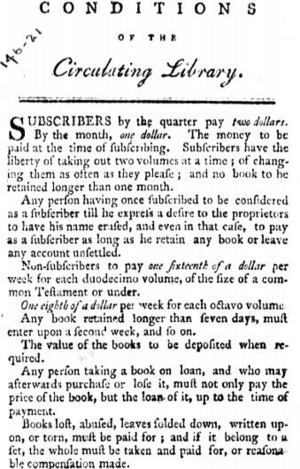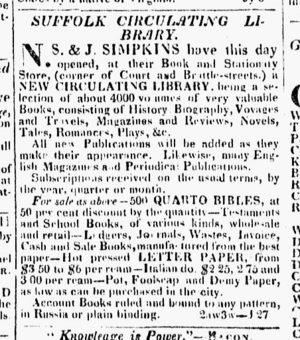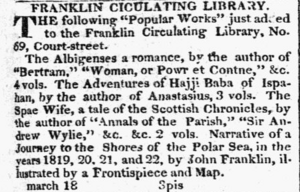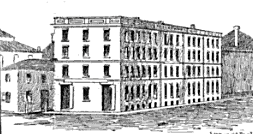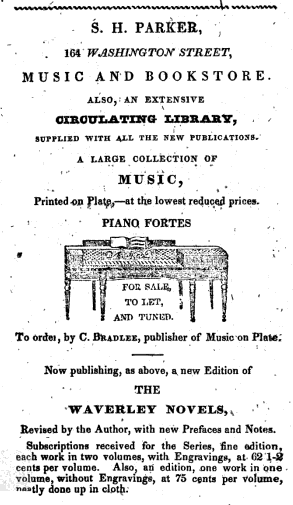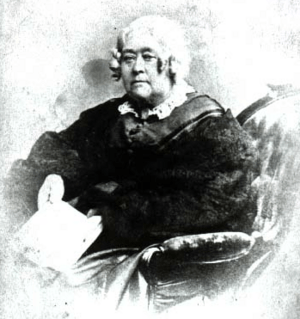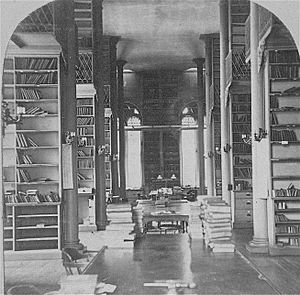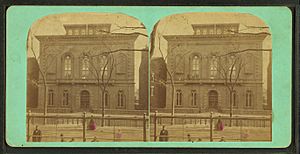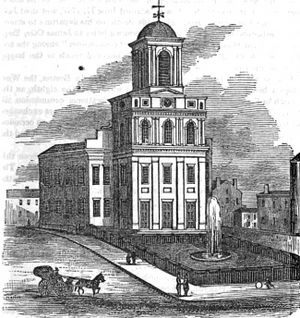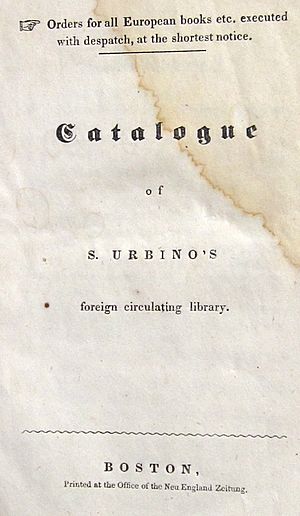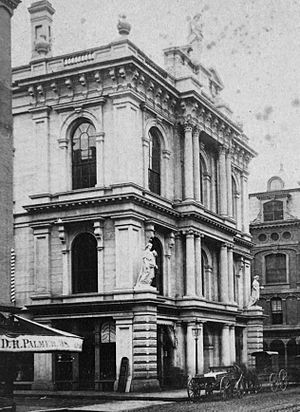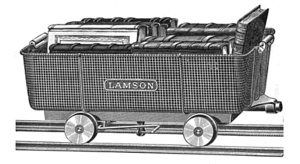List of libraries in 19th-century Boston facts for kids
Libraries are amazing places filled with books, knowledge, and stories! In the 1800s, the city of Boston, Massachusetts, was a very important center for learning and culture. Because of this, it had many different kinds of libraries.
This article explores some of the libraries that existed in Boston during the 19th century. These weren't just big public libraries like we have today. There were also places where you could borrow books for a small fee, special libraries for students, doctors, or even children! They all helped people learn and share ideas.
Contents |
Boston's Libraries in the 1800s
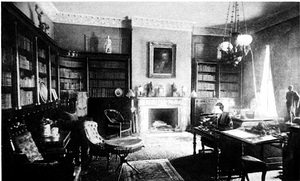
In the 1800s, Boston was a growing city. People needed places to read, learn, and get information. This led to many different types of libraries opening up. Some were free for everyone, while others required a small fee or membership.
Public Libraries for Everyone
The most famous library in Boston, and one of the first large public libraries in the United States, is the Boston Public Library. It opened in 1852. This library was special because it was free for everyone to use. It had many books for people of all ages and backgrounds.
Circulating Libraries: Borrowing Books for a Fee
Before free public libraries were common, many people used "circulating libraries." These were like rental shops for books. You would pay a small fee to borrow a book for a certain amount of time.
- Blake's Circulating Library: Run by William Pinson Blake and Lemuel Blake, this was one of the earliest circulating libraries in Boston, located at the Boston Book-Store on Cornhill.
- Franklin Circulating Library: This library was on Court Street and was another popular place to borrow books.
- Suffolk Circulating Library: Located at the corner of Court and Brattle Streets, it was run by N.S. Simpkins and J. Simpkins.
- Many other individuals and businesses also ran circulating libraries, such as Luke Baker, L.W. Bixby, Eliza Brown, and Catherine Moore.
Subscription Libraries: Members Only
Some libraries were "subscription libraries." This meant you had to pay a yearly fee to become a member. Members could then use the library's collection.
- Boston Athenaeum: This is one of the oldest and most respected subscription libraries in the United States. It was founded in 1807 and still exists today. It has a huge collection of books, art, and historical items.
- Boston Library Society: Another early subscription library that provided books for its members.
- Mercantile Library Association: This library was created for young working men, especially those in business. It offered them a place to read, learn, and improve their skills.
Libraries for Students and Scholars
Boston was home to many schools and colleges, and each often had its own library.
- Boston College Library: Supported students at Boston College.
- Boston University Library: Boston University had several libraries, including a main library, a School of Medicine Library, and a Theological Library.
- Medical College of Harvard University Library: This library served medical students and doctors.
- School of Technology Library: This library supported students studying science and engineering.
Specialized Libraries for Specific Interests
Many libraries were created for people with very specific interests or jobs.
- American Academy of Arts and Sciences Library: For scholars interested in science and art.
- American Statistical Association Library: For those working with numbers and data.
- Boston Medical Library: There were two important medical libraries in Boston. One existed from 1805-1826, and another was established in 1875. They provided resources for doctors and medical researchers.
- Boston Society of Natural History Library: For people studying plants, animals, and the natural world.
- Congregational Library & Archives: This library focused on religious history and documents.
- Massachusetts Historical Society: This library collected and preserved historical documents and books about Massachusetts.
- Massachusetts Horticultural Society Library: For people interested in gardening and plants.
- Massachusetts State Library: This library served the state government and its officials.
- New England Historic Genealogical Society: This library helped people research their family history.
- Social Law Library: This library provided legal books and resources for lawyers and judges.
Libraries for Children and Young People
Even in the 19th century, people understood the importance of reading for children.
- Mayhew and Baker's Juvenile Circulating Library: This was a special circulating library just for children, located on Washington Street.
- Munroe & Francis, juvenile library: Another library on Cornhill that offered books for young readers.
- Mechanic Apprentices Library Association: This library was for young people learning trades. It helped them gain knowledge and skills.
Church and Community Libraries
Many churches and community groups also had their own libraries for their members.
- Christ Church Library: A library connected to one of Boston's historic churches.
- Bulfinch Place Chapel Library: Another example of a church-based library.
- Boston Young Men's Christian Union Library: This library was part of a group that helped young men in the city.
- Boston Young Men's Christian Association Library (YMCA): The YMCA also had a library, offering a safe place for young men to read and learn.
- Young Women's Christian Association (YWCA): The YWCA provided similar resources for young women.
Private Libraries
Some wealthy individuals had impressive private libraries in their homes.
- George Ticknor's private library: George Ticknor was a scholar and a founder of the Boston Public Library. He had a large and important private library in his home on Park Street.
These many libraries show how much Boston valued reading and learning in the 1800s. They provided access to books for almost everyone, from scholars to children, helping to shape the city's intellectual life.
|


